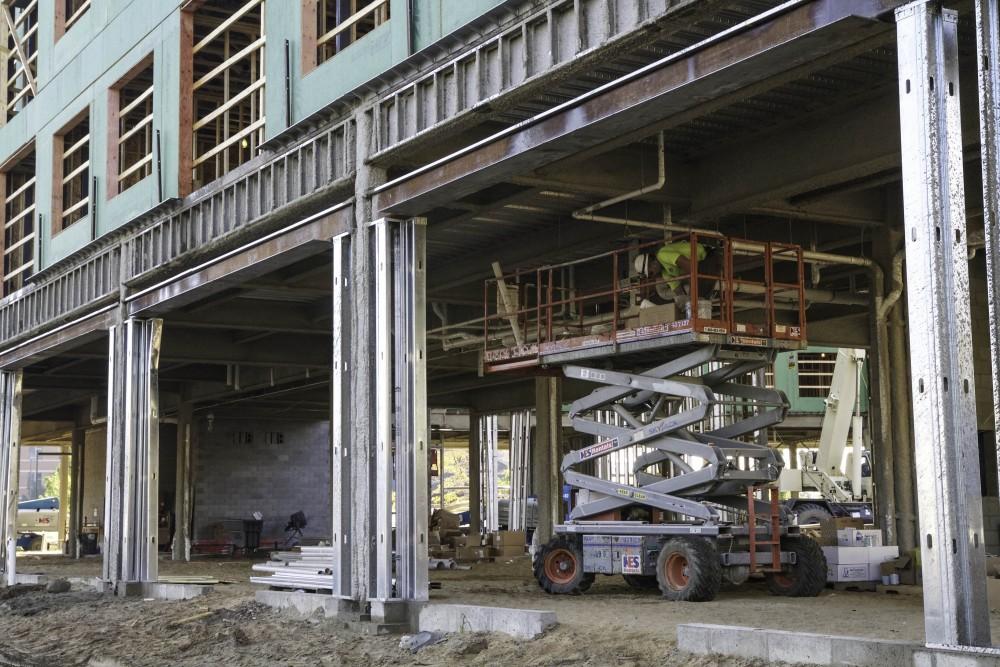Fulton Place housing raises residential concerns

GVL / Sara Carte Rockford Construction works on Grand Valley’s new housing, Fulton Place, on Fulton Street West on Oct. 21. Fulton Place will be finished are ready for students to move in for the 2016-2017 school year.
Nov 9, 2015
When students consider where they are going to live, they look out for a few key necessities including adequate location, appropriate amenities and the often-tricky affordable price factor.
However, for students choosing to live in Fulton place, issues of gentrification and displacement are now something else to consider.
Emma Vandenberg is a writer involved with If The River Swells, a website created to generate discussion about the current processes and changes happening in Grand Rapids. She said Fulton Place is aiding in the rapid gentrification of neighborhoods by pushing current residents out.
Vandenberg defined gentrification as an “updated form of colonization where privileged, mostly white residents invade an area that’s been inhabited by mainly poor (residents).” She said the development for Fulton Place included the demolishing of four houses that existed for working class and low income residents.
Ginny Seyferth, Rockford Construction spokesperson, said Rockford Construction is helping the city by constructing Fulton Place. She said there was a need for student housing in the neighborhood, so students would refrain from taking up homes better suited for families.
Seyferth said the houses that were taken down by the Fulton Place development were in extremely poor condition. She also said the city of Grand Rapids is working with Rockford Construction to make sure the neighborhood has the housing it requires.
Grand Rapids has to house students from Grand Valley State University, Kendall College of Art and Design and Grand Rapids Community College. Seyferth said there was a need for student housing that did not occupy homes that were better-suited for families in the surrounding area.
Vandenberg argues that Rockford Construction pitched these developments as attempts to better the neighborhood. She said this excludes people who already lived in the neighborhood, and ultimately excludes more residents by creating housing that is inaccessible to the working class.
“Gentrification is probably not in the minds of Rockford Construction, but is ultimately their goal, because it’s how they make money,” Vandenberg said.
On the other hand, Seyferth said Rockford Construction works with the city to prevent gentrification. She said they work to create housing that suits the neighborhood’s needs.
“Rockford is seen in this community as part of the solution,” Seyferth said.
Gentrification is a big issue in the mind of future Grand Rapids Mayor Rosalynn Bliss, Seyferth said.
GVSU students should be a part of the solution, Seyferth said. She said students need to become involved in Grand Rapids by meeting the people in the neighborhoods and understanding the various needs in the community.
“It’s easy to sit on the sidelines and not really understand,” she said.
Vandenberg argues that GVSU students should get involved by refusing to live in Fulton Place. She said that students who care about the neighborhood should choose to avoid the housing unit. If students do not support the new housing, she said it would ideally prevent any new construction projects.
“Projects like (If The River Swells) initiate conversations around gentrification,” Vandenberg said. “Hopefully from there people can come together and figure out ways to stop this from happening.”





















